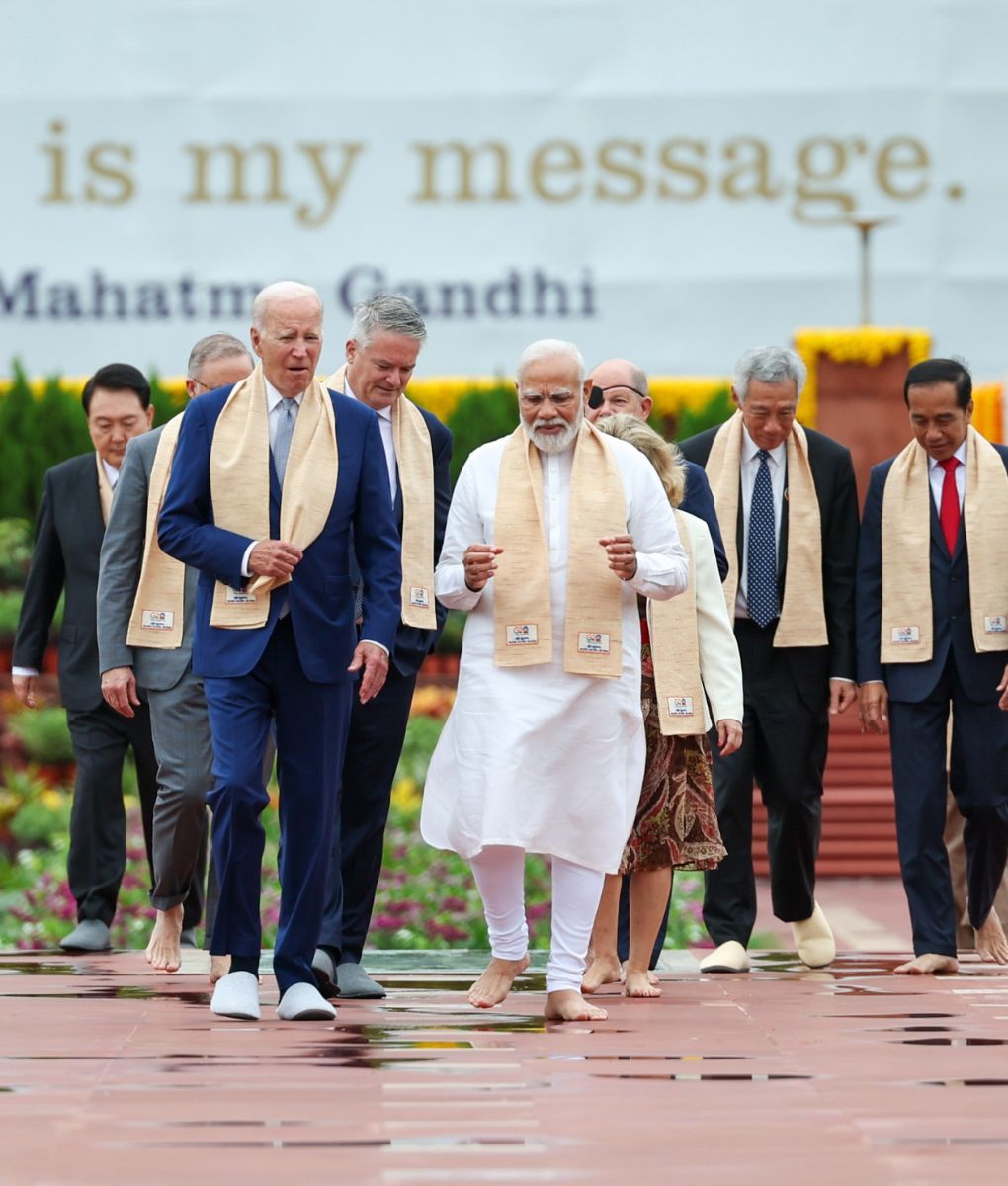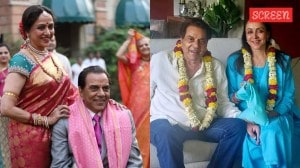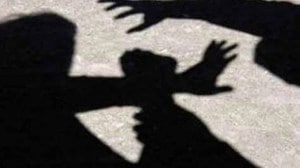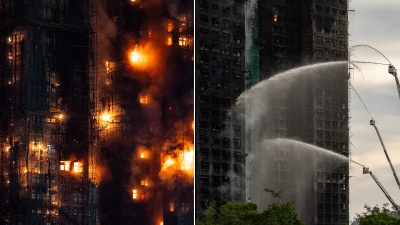Just ahead of the concluding session of the G20 Summit, the visiting heads of state stood together, in silence, to pay their tributes to Mahatma Gandhi – and raise a united voice for world peace.

From 8 am, Prime Minister Narendra Modi received the leaders one by one, welcoming them at the samadhi sthal with a hand-spun khadi ‘angavastram’ or stole, standing against the backdrop of a large poster of Sabarmati Ashram, the Mahatma’s residence from 1917 to 1930 and one of the main centres of India’s freedom struggle against British rule.
United Nations Secretary General António Guterres, International Monetary Fund chief Kristalina Georgieva, Bangladesh Prime Minister Sheikh Hasina and Singapore Prime Minister Lee Hsien Loong were among the first to reach the memorial. Modi could be seen explaining to each the significance of Sabarmati Ashram.
 Prime Minister Narendra Modi with the US President Joe Biden and other world leaders at Rajghat, New Delhi. (Photo credit: X/@narendramodi)
Prime Minister Narendra Modi with the US President Joe Biden and other world leaders at Rajghat, New Delhi. (Photo credit: X/@narendramodi)
Between 8 am and 9 am, as many as 30 leaders from G20 member states and international organisations arrived at the Rajghat, where a black marble platform marks the spot where Mahatma Gandhi’s last rites were performed.
Those who assembled to pay tributes included US President Joe Biden; UK PM Rishi Sunak; Chinese Premier Li Qiang; Italian PM Georgia Meloni; French President Emmanuel Macron; Brazilian President Luiz Inacio Lula De Silva; Japanese PM Fumio Kishida; Russian Foreign Minister Sergey Lavrov; African Union’s Azali Assoumani besides a host of chiefs from international organisations such as World Bank’s Ajay Banga and UN chief Guterres.
With the off-white khadi scarves around their necks, the leaders walked to the memorial platform, which features an eternal flame, and stood together before wreaths placed around it.
Story continues below this ad
Incidentally, the one that PM Modi stood next to identified him as the “Prime Minister of the Republic of Bharat”.
The leaders observed silence and paid tributes to Mahatma Gandhi.
While some leaders, including Sunak, Canadian PM Justin Trudeau, Spain’s Vice-President Nadia Calvino and German Chancellor Olaf Scholz, walked barefoot to the memorial spot from the entrance, others such as Biden and Guterres wore cloth slippers provided at the venue.
After paying tributes, the leaders signed the Peace Wall at the memorial before moving to Bharat Mandapam, the venue of the G20 Summit.
Story continues below this ad
Soon after the visit, Prime Minister Modi posted on X, “At the iconic Rajghat, the G20 family paid homage to Mahatma Gandhi – the beacon of peace, service, compassion and non-violence. As diverse nations converge, Gandhi Ji’s timeless ideals guide our collective vision for a harmonious, inclusive and prosperous global future.”
With Delhi experiencing overnight rainfall, officials said, those manning their posts at the memorial brought in pumps to clear any waterlogging at the venue ahead of the leaders’ visit.
Officials at Raj Niwas said that Delhi Lieutenant Governor (L-G) V K Saxena, who was watching the arrival of the dignitaries at Rajghat on television, was monitoring the preparation in real time.
“The L-G ensured that during the 90-second interval between arrivals of each dignitary, the floor was repeatedly mopped and dried,” an official said.
Story continues below this ad
In his concluding speech at the summit, Brazilian President Lula da Silva expressed deep emotions about his visit to the Rajghat, calling Mahatma Gandhi his “role model”.
Drawing a parallel between his Labour Movement’s work and the Mahatma’s non-violent struggle, he said, “In my political life, Mahatma Gandhi has great meaning because the struggle with non-violence was a role model that I followed for many decades when I was in the Labour Movement.”



 Prime Minister Narendra Modi with the US President Joe Biden and other world leaders at Rajghat, New Delhi. (Photo credit: X/@narendramodi)
Prime Minister Narendra Modi with the US President Joe Biden and other world leaders at Rajghat, New Delhi. (Photo credit: X/@narendramodi)





